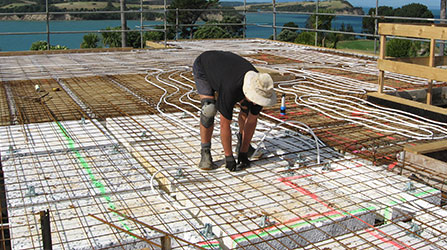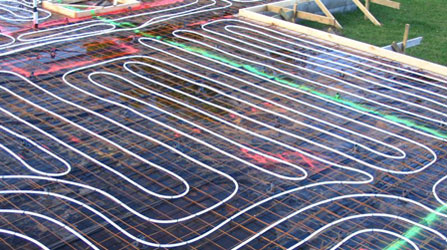 |
Hydronic HeatingEfficientEconomicalNon-AllergenicWaitoki Engineering utilises IPEX computer modeling for all system designs ensuring the hydronic heating system pumps the hot water through the radiators efficiently. Besides being the world’s largest manufacturer of thermoplastic pipe and fittings, IPEX is also world leader in under floor heating technology.
A hydronic heating system (wet system) is dependant on hot water to heat a room or home. The process starts off at the boiler, a pump is sending the water through a pipe distribution system in the house for emanation by using radiators, or the floor itself. As the water cools off, it goes back to the boiler to be re-heated. Due to this system, the objects in your household stay warmer for a longer period of time, thus helping to keep warmth in the house. The most recent talks in the industry have stated that heating your home from the floor up rather than vice-versa is much more comfortable and effective. The hydronic central heating is one of the most efficient and economical alternatives of heating your home. It has become one of the primary choices for house heating in the UK, and also in two thirds of the world. This system is prefered in cooler climates given the fact the energy used to achieve the same level of heat is much lower in a hydronic central system than a ducted heating system, or solely on a heat pump. Hydronics have started being used extensively in Europe, where the high cost and scarce fuel availability made homeowners look for the most economical and effective heating options, given how cost-efficient they can be. A well-designed and installed hydronic system can be very practical in terms of energy use. Central heating is the heating of the whole house environment rather then the NZ tradition of heating just living rooms. It provides a warm and inviting heat in every room, that increases comfort, and is a healthier, drier home environment.   |